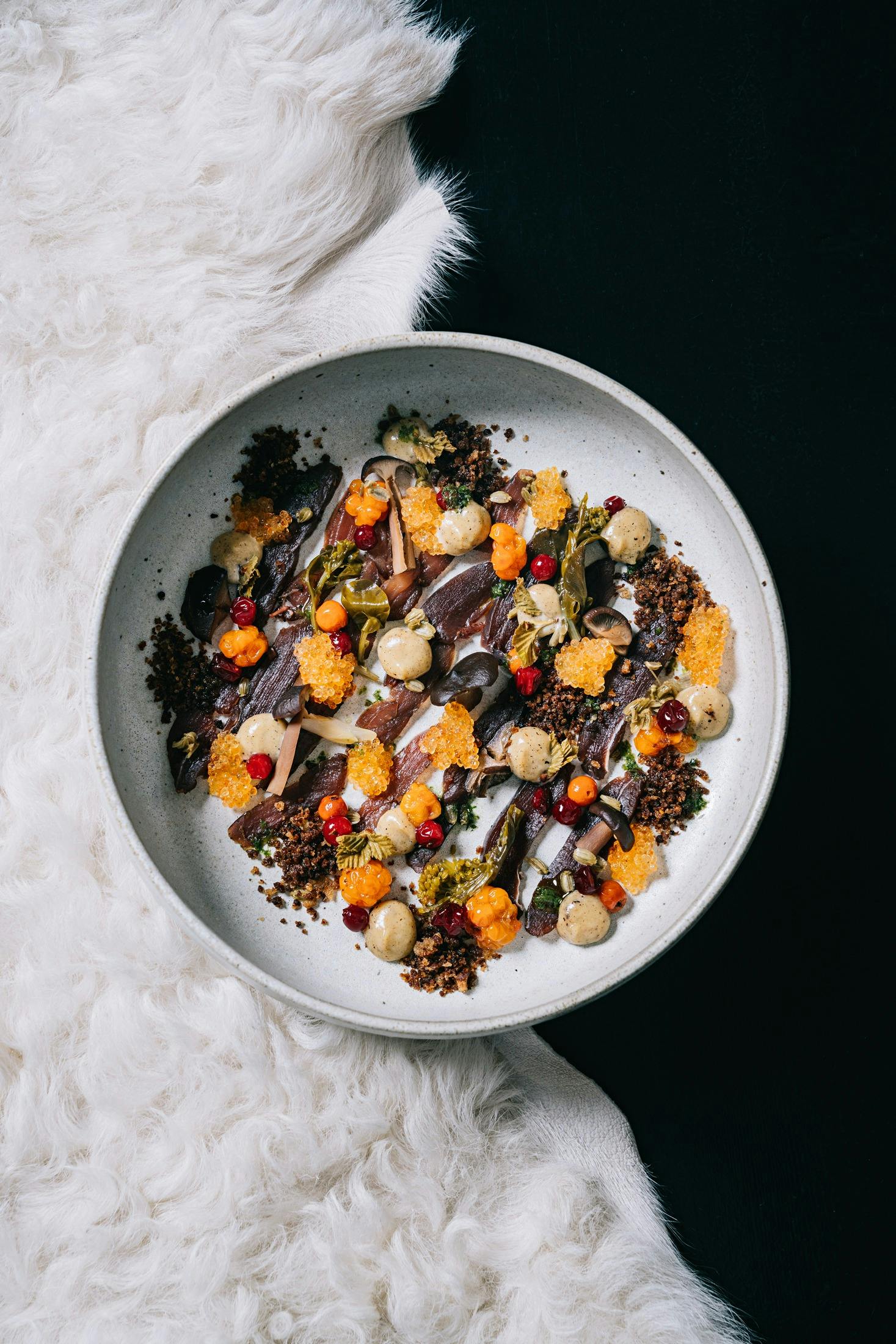‘Everything on this plate was prepared a year ago’
Lena Flaten, the creative force behind lauded rural restaurant Flammans Skafferi, serves a conversation-starting dish that encapsulates rural Sweden.
Words by Sophie Miskiw. Photography by Johan Ståhlberg.
Climate and cuisine are intricately linked, regional gastronomy typically a smack of the local environs and lifestyle. With Sweden’s long, tough winters and short yet bountiful summers, cuisine in the county of Jämtland is characterised by preserved wild ingredients and artisan produce sourced locally.
That’s the cornerstone of the culinary direction at Flammans Skafferi, a restaurant in the remote Swedish village of Storlien. Nestled in the mountains not far from the Norwegian border, restaurant owner and head chef Lena Flaten sets out to encapsulate the region with each dish on the multi-course tasting menu (more informal diners can also get a taste of Jämtland at the restaurant’s laidback ‘bar and food’ nights, where the same ingredients are served on oven-baked sourdough pizzas).
“This dish is like Skafferiet on a plate,” says Lena, referencing the ‘Skafferi’ in the restaurant’s name, which in English translates to ‘pantry’. “It shows just how easy it is to pull something together when you have most of the food already prepared. Everything on the plate, aside from the smoked cream, was prepared a year ago.”
Willow grouse are native to the region, often dwelling in the mountains or in the villages below. Subsisting on pine, spruce, and birch, willow grouse meat takes on these flavours compounded by a hint of gamey-ness. Lena marinates the meat for two days in a marinade of salt and sugar with wild foraged herbs and spices, a splash of her own mushroom soy and a dash of Mackmyra whiskey. Before serving, she finely slices the meat and adds preserved Mountain Angelica seeds, rowan berries, cloudberries, birch shoots and pickled Nordic milk cap. To top it off, she punctuates the plate with dollops of whitefish roe - purchased from a local fisherman in nearby Strömsund - and her own sour cream smoked on the wood fire over birch logs. For texture, the dish is served with crunchy butter-fried rye bread.
The components on the plate paint a vivid picture of the region, blending flavours that are at once singularly complex and naturally complementary.
“Sometimes, if you put too much on a plate, you can’t taste the different flavours. In this case, everything grows here, which is why it all works together. Everything is prepared differently too, like the preserved Mountain Angelica seeds are a bit salty and the rowan berries are like tannins, and I preserve them with vinegar and salt. The milk cap has a lovely consistency and the whitefish roe adds a fishy saltiness to the dish. It’s very popular to talk about umami these days but we have been using it for ages - we just didn’t have a word for it! The roe together with the other flavours gives the dish an umami taste.”
Not only does each ingredient bear relation to the next, they all have a close connection to Lena too. Consciously sourced and often preserved or prepared by Lena herself, she has a vast knowledge of everything that ends up on the plate at Flammans Skafferi. It’s this deep insight into the tastes she’s working with that adds a rare flavour of authenticity to every dish.
“I have a relationship to all the food I serve. It’s hard for me to cook with something I don’t know. Everything on this plate, we have a connection to. For example, we have picked the birch shoots ourselves, and Mountain Angelica was the most valuable herb of the Sami when they were a travelling people, favoured for its nutritional value and medical qualities.”
Lena imparts these pearls as skilfully and deliberately as she plates up the dish itself. As she sets down the plate, she briefly shares an overview of what is being served, and then waits for the diners to take a bite. The food, she says, naturally inspires curiosity and conversation.
“It’s a dish that makes people ask about all of the different components on the plate. It gives me an opportunity to tell people more about the history of what they’re eating. Each ingredient has its own story, so on this one plate alone there are so many stories to tell.”
Words by Sophie Miskiw. Photography by Johan Ståhlberg.
